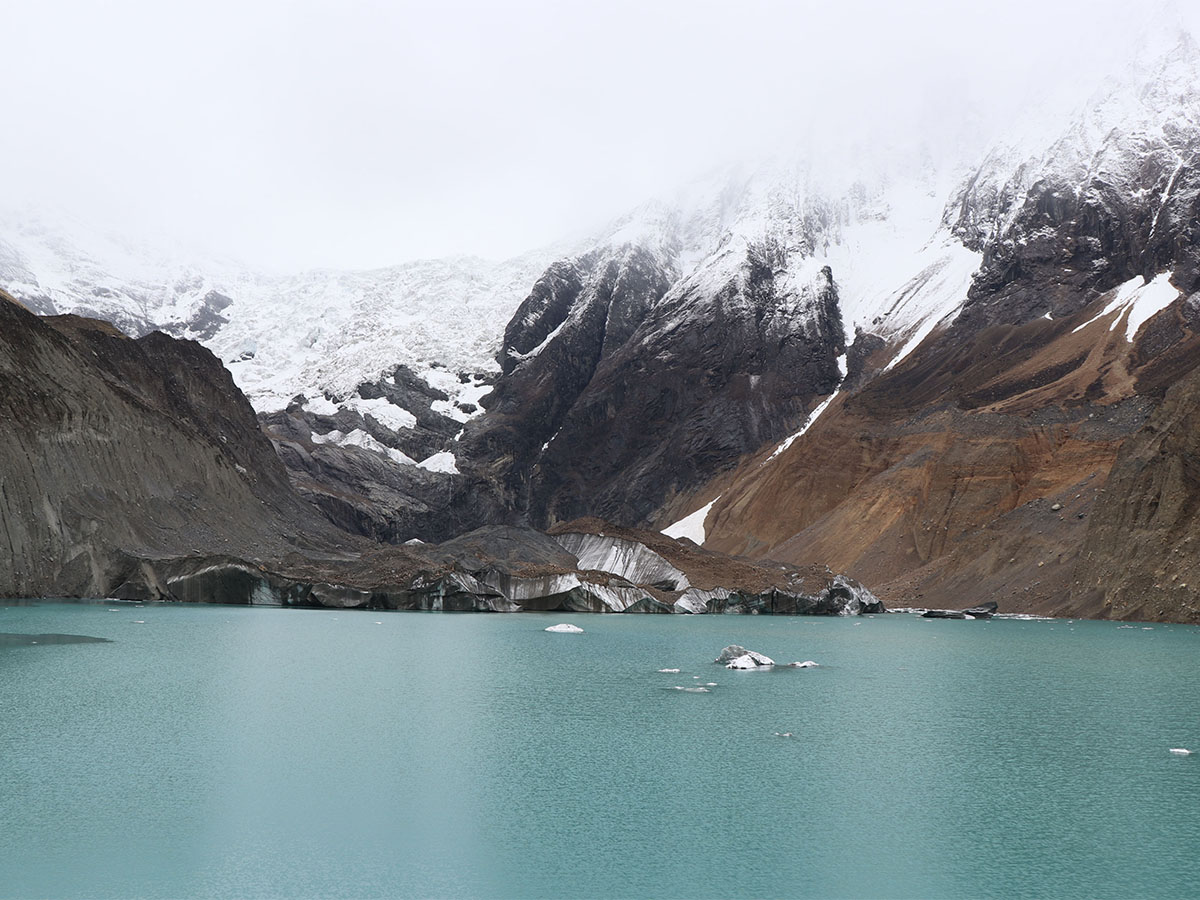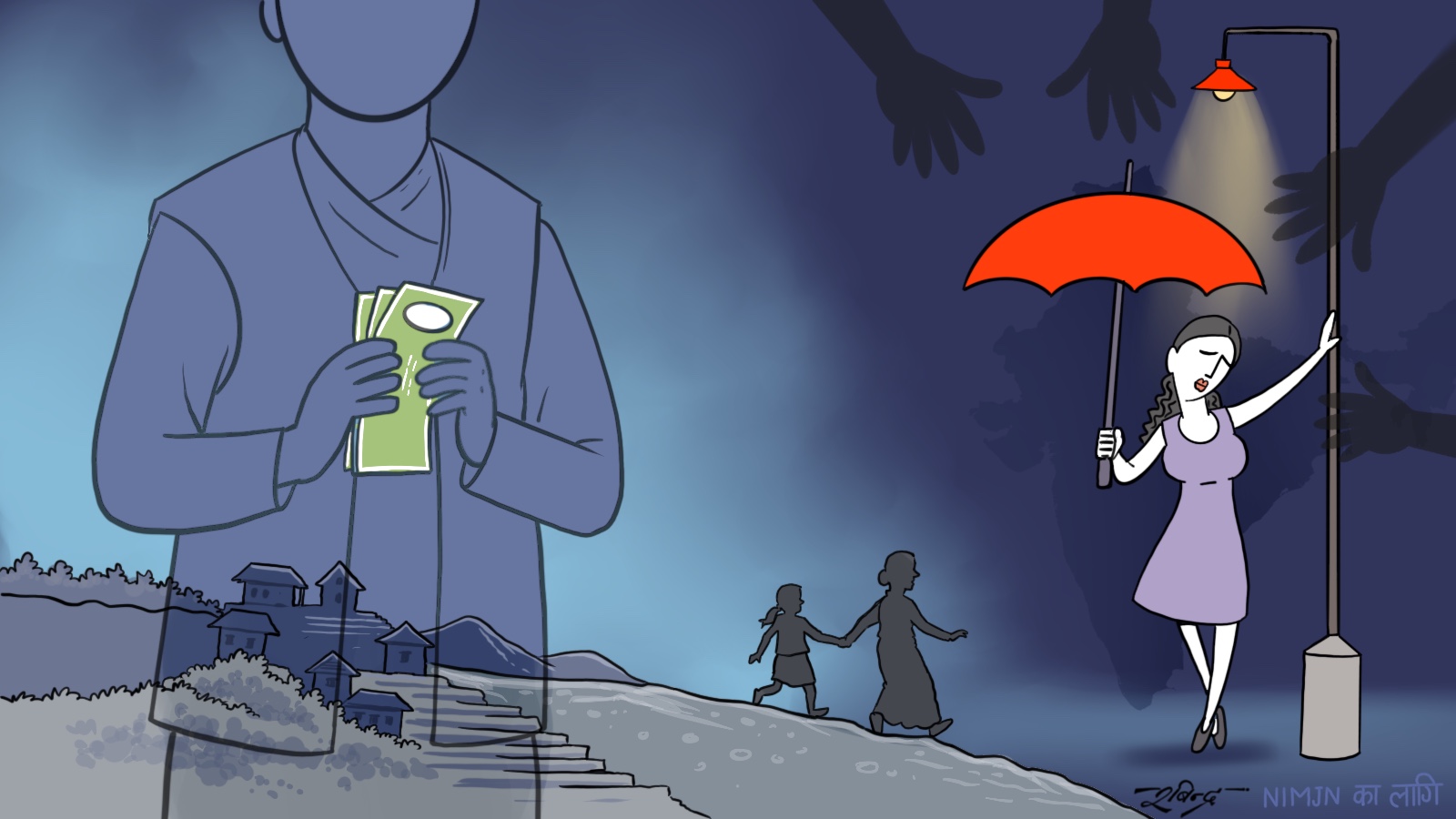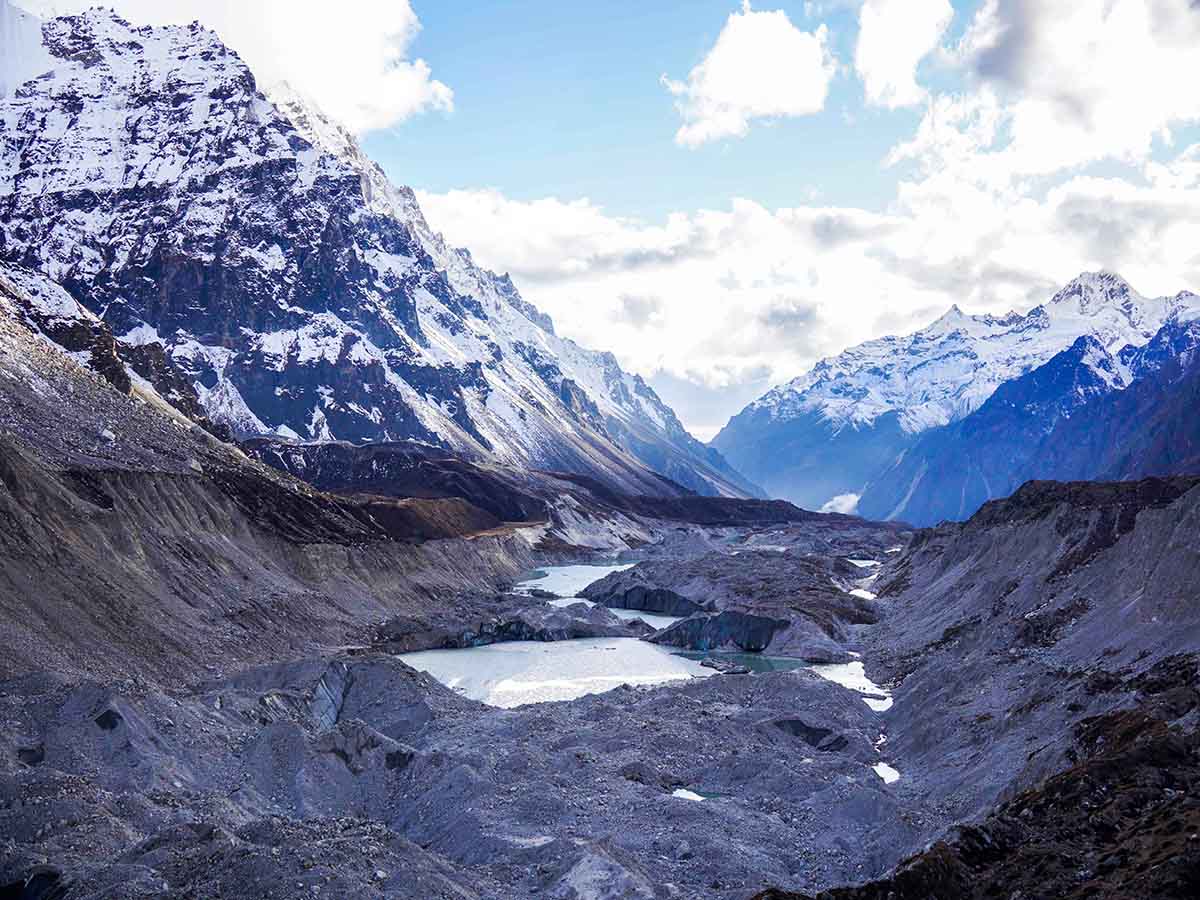Read this story in Nepali: विद्यालयमा विपद्: अपांगता भएका बालबालिकाको सिकाइमा क्षति
--- ---
Tanka Prasad Dahal is 18 years old and lives very close to his school, Pashupati Basic School in Mulkot, Sindhuli. Even though he is older than most students, he lives at the school because he has an intellectual disability. But everything changed on September 26, 2024. After two days of heavy rain, the Sunkoshi River flooded and went over his school. When the water went down, the school was full of sand and broken pieces. The two-story building now looked like it only had one story.
A total of 117 students went to Pashupati Basic School, including 95 regular students and 22 students with disabilities. The 95 regular students were able to start classes again, even if they had to use one classroom for two different classes. But students like Tanka have not been able to return. This makes it hard for students with disabilities to get back to school after the disaster.
Nirmala Kumari Shrestha, the school principal, said that they haven't been able to bring the students with disabilities back because the flood destroyed the entire first floor. All the supplies and materials that were stored there were also ruined. On February 12, 2025, she came with us (the NMJN team) to check on Tanka's situation.
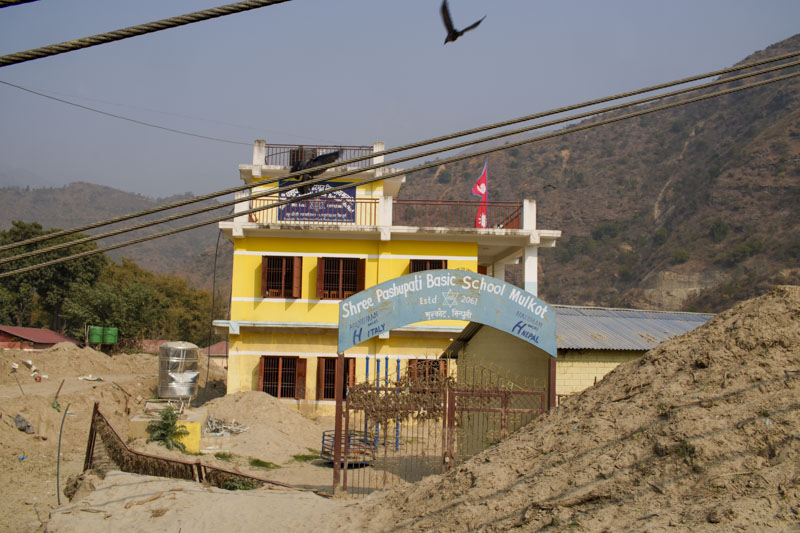
Tanka has a problem with his leg. Last year, he went to Kathmandu for an operation on his leg but it didn't get much better because he didn't get enough exercises to help it heal, his mother Sharada said. The principal said that Tanka has trouble walking because there is no one at home who can help him do these exercises regularly, probably because both of his parents have health issues.
Tanka's mother, Sharada, says that he is trying to walk on his own. For his part, Tanka cannot speak confidently and clearly. He shows his feelings through babbling and humming when he hears his favorite song on the radio. Tanka is also trying to write his name clearly. He told us, while his mother was there, that he really wants to go to school and that he misses his friends from school. It's clear that his parents also want him to be able to go to school.
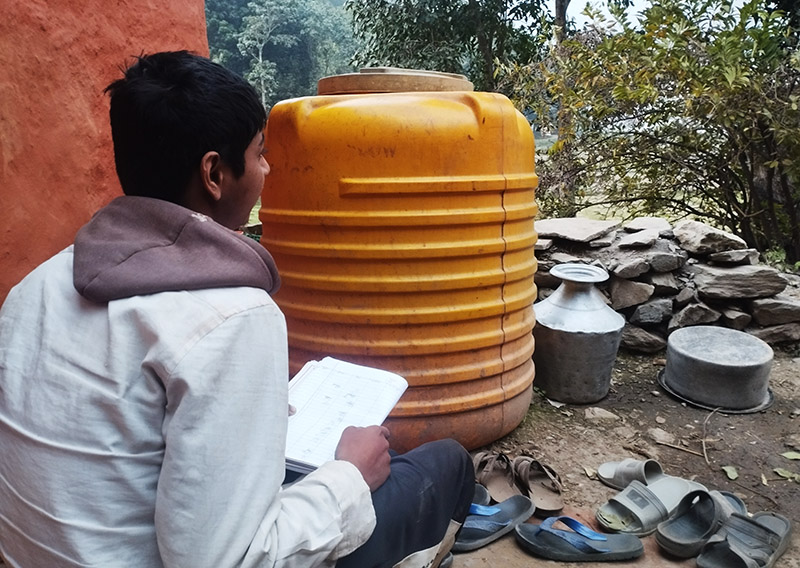
Hira Devi Shankar is another child with a disability from Sindhuli Nanglebhare. Her parents send her to a school nearby but she doesn't want to go because that school doesn't have things that make it easy and comfortable for children with disabilities. Hira, who is 10, learned a lot at Pashupati School. Before she came to that school, she didn't even know how to hold a pencil. Before the flood damaged the school, including the classrooms, she could write and read a little. The school hasn't asked her to come back because there is no fence around the school for safety.
Now, Hira's parents have started sending her to a school close to their home, but she doesn't want to go there. Her mother, Kalpana, said, "The school is only about 15 minutes from our house. We started sending her there so she wouldn't forget what she learned, but she doesn't want to go because it's not a good place for her." Kalpana also said, "Even when she goes, she doesn't learn anything new." According to Kalpana, Hira forgets things easily. She doesn't speak clearly and takes a long time to understand what other people are saying to her. Kalpana said, "She has missed school because of the flood. The school said they will call us after they build a fence. I really hope they do."
The school principal, Nirmala Kumari, said that the children with disabilities used to learn practical skills and knowledge instead of just theory. But the school hasn't been able to start classes for them again because it's not easy for them to get around after the floods. A wire fence has been put up at the edge of the school grounds. She says that once they build a proper wall around the school and get the money to fix the damage, it won't take long to make the school like it was before. She also mentioned that a new building with three rooms is being built with help from the local government so that the children with disabilities can continue their learning. The principal said that once the wall is built, they will be able to bring the children with disabilities back to school.
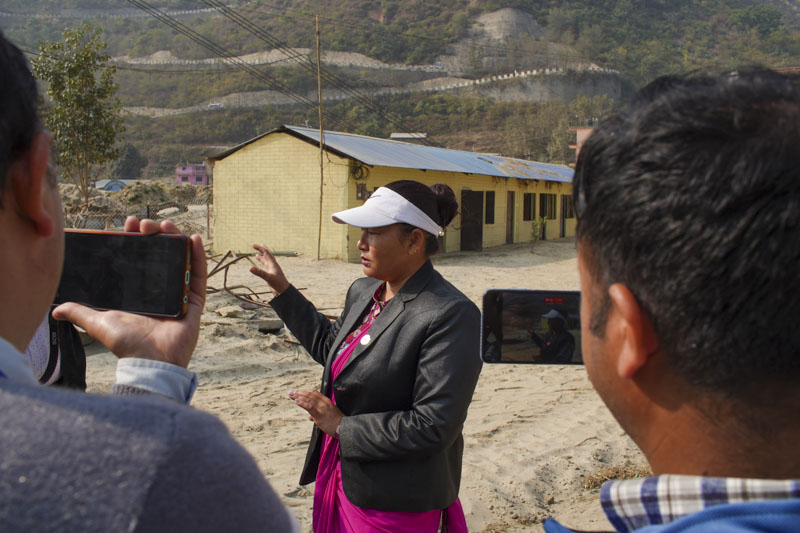
Surath Kumar Basyal, spokesperson for the Sunkoshi Rural Municipality, said that there used to be a special learning center just for children with intellectual disabilities. Two teachers and two helpers worked there for these children. They had two rooms to live in and one classroom, and the Rural Municipality took care of it all. The floods ruined everything except the building itself.
Because they don't have enough desks and benches, some students have to sit on the floor during classes.
There are no good restrooms or clean drinking water. The flood filled up their well, so now they get dirty water from it. They also have to walk a long way to get water to drink. Nirmala Kumari said that the mud from the flood has dried up and is now causing a lot of pollution, which is making the children sick.
677 schools in suffering
According to the National Disaster Risk Reduction and Management Authority (NDRRMA), a total of 677 schools in 41 different districts of the country were damaged or destroyed by the floods in 2024. Forty-five of these schools were in Sindhuli. Sadly, 13 students died because of the monsoon disaster, and 50 affected students were rescued alive. However, the NDRRMA doesn't have information on how many children with disabilities were affected. The NDRRMA says that Bagmati province was the most affected by floods and landslides, with Kavrepalanchok district reporting damage to as many as 182 schools. The Authority estimates that it will cost over 1.78 billion rupees to rebuild the school buildings that were destroyed by the monsoon disaster.
The Ministry of Education has slightly different numbers. They say that floods and landslides damaged 163 schools – 110 in Bagmati and 53 in Koshi provinces. The difference is because the NDRRMA counted all schools that had any damage, while the Ministry of Education only counted the schools that had serious damage. Debaka Dhakal, the head of the Education Development and Coordination Unit (EDCU), said that the monsoon floods and landslides have made some schools unsafe for children to attend. Other schools have reopened after some small repairs. She said that the local government, through the EDCU, gathered information about the losses and damage to help with aid and rebuilding in the education area. According to her, they are currently talking about how to manage money for school cleaning, repairs, rebuilding and preparing for future disasters.
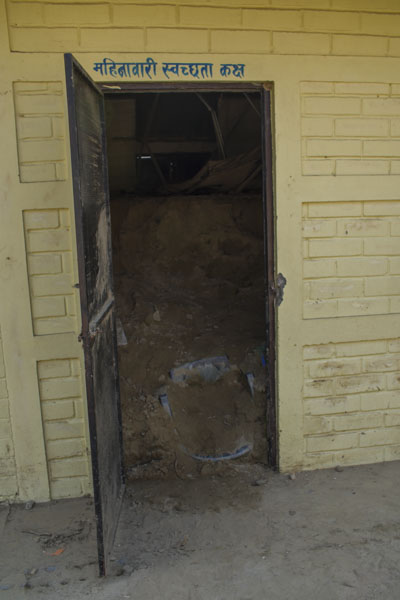
The floods have badly damaged the places where schools get drinking water and the toilets. It's very important to make sure the schools have clean drinking water right away, and the paths to the school and the playground need to be fixed. A first report about getting ready for the monsoon and helping after emergencies, made by the Makawanpur district, showed that they need to rebuild the damaged schools more quickly. The report says that 29 schools in that district were damaged.
Surath Kumar Basyal, Spokesperson for the Sunkoshi Rural Municipality, said that even though the local government is trying to fix the problems caused by the disaster, they don't have enough money to do it. At the same time, Dr. Dijan Bhattarai, who is an Undersecretary and was the spokesperson for NDRRMA, said that they have created a joint plan to help the schools that were damaged by the monsoon floods and the earthquakes in Jajarkot.
Education for children with disability
There are rules in Nepal's constitution, laws, and government plans to make sure children with disabilities get the education they need. Devidutta Acharya, who leads the National Disability Federation Nepal, said that in recent years, some regular schools have become inclusive, and more children with disabilities are getting access to education. According to a guidebook from 2018 about including people with disabilities in education, there were 33 special schools, 23 schools that combined special and regular education, and 316 resource classes for children with disabilities.
However, the schools that are open still have problems. Janaki Thapa, who is an interpreter, said that the school for the deaf in Birgunj, Parsa, doesn't have enough classrooms. This school goes up to grade five and has 53 students, 38 of whom live there, and four teachers. The school needs a building and more classrooms.
The situation is much worse at Ramjanaki Sustamanasthiti School in Dhanusha – it is not even open anymore. Baliram Jha, who used to be the principal, retired two years ago. Now, only one staff member looks after the school. According to Baliram, this person just signs the attendance book whenever they want and still gets paid. Baliram said, "Nobody cares about it. Students come to the school and find the gate locked, so they go back home. Parents call me to complain. When I go to check myself, I find the school closed."
When Baliram retired two years ago, there were 14 students at the school. Now, all of them have lost their chance to learn.
The situation of these two schools from Dhanusha and Birgunj is symbolic of the various problems faced by schools for children with disability.
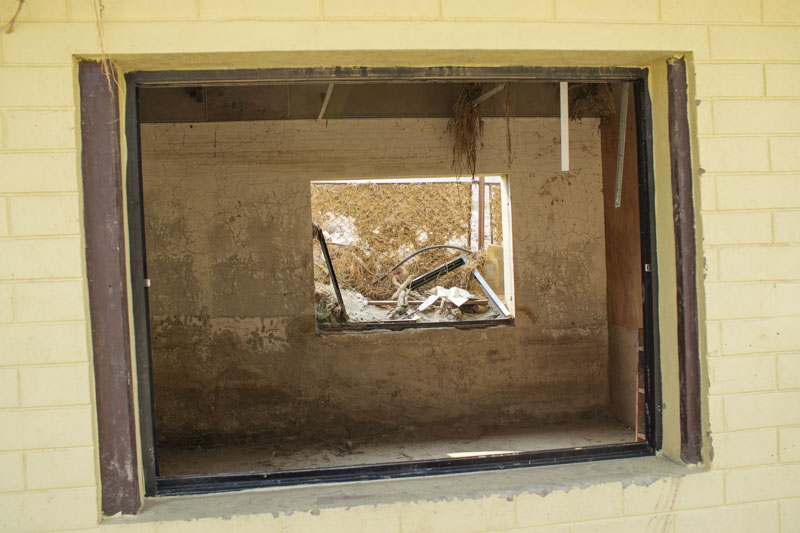
The government gives four kinds of money help to children with disabilities. There is a "Motivation" scholarship of 1000 rupees each month for ten months. There is also a monthly transportation scholarship of 3000 rupees or 5000 rupees for each child who needs help to go to school regularly. Children who live in hostels, away from their homes, get 50,000 rupees each year. The schools get this money from their local government.
Devidutta Acharya said that they are trying to build schools in safer places. However, the government hasn't yet made it possible to build school buildings that are completely safe for children. Because of this, when disasters happen, the schools that teach children with disabilities become risky for these children, especially because there aren't good ways to rescue them that consider their needs.
The number of disasters happening in schools and the education area is increasing every day, making both the schools and the children there unsafe.
Around the world and in Nepal, steps are being taken to make schools and the education area less risky. There are laws and government plans in place, both internationally and in Nepal, to reduce disaster risks in schools and to encourage a culture of school safety. These efforts will help get everyone involved to work together to make sure schools are safe in the future.
Even though children with physical disabilities, vision problems, and hearing problems are currently going to school, those with more severe disabilities are still not in school, which means they are missing out on education. The Ministry of Education has a program to teach children at home. They are talking about finding these children and creating a way to have volunteer teachers educate them in their homes. The government has been making plans to make sure these children can go to school. However, when you look at how well these plans are being put into action, you don't see much real progress.
Disability and social inclusion
The government has created a plan called the Strategic Action Plan for Gender Equality, Disability and Social Inclusion (GEDSI) in Disaster Risk Reduction and Management (2024). Dr. Dijan Bhattarai, who was the spokesperson for NDRRMA at the time, said that this plan gives clear instructions on how to include everyone equally, including people with disabilities, when preparing for and dealing with disasters.
Devidutta Acharya said that even though the 2015 earthquakes showed that children with disabilities are very likely to be in danger during disasters, there still isn't enough specific preparation that includes them.
Pashupati Basic School doesn't have enough classrooms, so students are being taught in an open area on the second floor of a building that is still being built.
According to him, he has asked the NDRRMA to make children with disabilities a priority in schools and hospitals when they are doing rescue and recovery work. He believes that early warnings about disasters should also be easy for everyone to understand and access. He also said that not having access to information makes these children even more at risk during disasters. When making plans for how to respond to disasters, they should think about how to provide services for people who can't hear or speak, people who use wheelchairs, and children who can't see.
Also, the people who help during disasters should be trained on how to assist these individuals. The Strategic Action Plan (2024) says that the government should give out kits with tools that people with disabilities will need in emergency situations. Devidutta Acharya says that his organization has been working on this issue constantly.
Making schools safe
According to a report from 2017/18, there are 35,601 schools in Nepal, with 29,005 being public and 6,566 private. A study called ‘School Safety and Existing Legal Provision Directive’ by Krishna Prasad Bhattarai found that two-thirds of these schools are in danger of disasters. The Ministry of Education has started a big plan called the Comprehensive School Safety Masterplan (2017) and created a guide called the Comprehensive School Safety Minimum Package (2018). The National Policy for Disaster Risk Reduction (2018) aims to help Nepal grow in a way that is safer, can adapt to climate change, and can recover from disasters. These rules give schools at all levels advice on having good education and being ready for disasters. Chandra Kanta Bushal, Spokesperson for the Center for Education and Human Resource Development (CEHRD), said that CEHRD is working with aid groups and other organizations to promote the comprehensive school safety masterplan. They also provide training and do practice drills.
The School Safety campaign includes programs that protect students, teachers, and staff from dangerous weather, fires, diseases, and natural disasters, including ways to prevent them. According to Chandra Kanta Bushal, they are teaching people and sharing information as part of this campaign. He also said that they are working to make schools safe by creating education groups and working with the national, regional, and local governments. They are also providing training to the School Management Committee and parents.
However, education expert Professor Dr. Bidhyanath Koirala says that this campaign hasn't been very effective because it doesn't consider the specific needs of local areas. He believes that if the training included local knowledge and skills, it would work better.
The study by Krishna Prasad Bhattarai also showed that putting school safety programs into action in schools is still weak. The study found that people involved in education don't know much about school safety, and they also don't know much about the existing laws and school safety rules. The study showed that most students are at risk of disasters because they don't have a safe place to learn. The study lists the problems caused by disasters, such as damage to school buildings, disruption of teaching and learning, students being forced to leave school, and the need for recovery in the local community.
Leaving no child behind
Article 24 of the Convention on the Rights of Persons with Disabilities (2006) says that people with disabilities have the right to education. It states that countries that have signed this agreement must make sure that everyone, including those with disabilities, has the same chance to get an education at all levels and throughout their lives. The Convention also says that these countries should provide the specific support that each person needs to achieve this.
The Rules Regarding Rights of Persons with Disabilities (2020) in Nepal say that the government must arrange accessible education with places to live for children who cannot travel to and from school on their own because of a severe disability or because they are very poor and have no one to help them.
The constitution of Nepal has given the responsibility for education up to the secondary level to the local governments. Because of this, Devidutta Acharya argues that it is the job of the local authorities to know how many children with disabilities there are, to understand what each of them needs, and to make sure they can go to school.
What kind of tools would help children like Tanka to learn easily or to walk? Devidutta says that the local authorities should create a helpful environment for Tanka to get to school. And once he is there, the school should make it easy for him to interact with teachers and other students. Children with disabilities can get the regular money help that the government provides for free education if their schools write to the local authorities, and then the local authorities recommend it to the Department of Education.
Education expert Dr. Bidyanath Koirala argues that local authorities need to take the lead in providing desks, benches, and trained teachers for children with disabilities and in making sure they can go to school. He says that the regional and national governments should help the local authorities with this. According to him, each school should provide what a child with a disability needs based on their individual situation, and the local government should make sure this happens. He says that schools, local authorities, parents, and organizations that work with people with disabilities all need to support this cause.
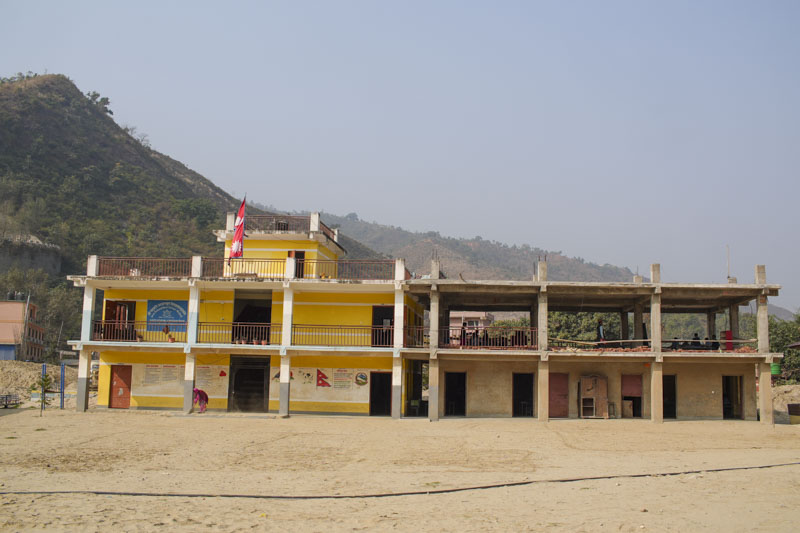
There is a special learning plan made just for children with intellectual disabilities. But they need teachers and helpers who are trained, and they need different kinds of technical help based on what they need. For example, children with physical disabilities need help from a physiotherapist. Those with speech problems need a speech therapist. And they need occupational therapy to learn practical knowledge and skills.
Dr. Bidhyanath Koirala says that because schools, local authorities, and the community don't know enough about these needed services, children with disabilities have been missing out on school education. He says that there are now good technologies and training available for learning. The government has also made a plan to use resources, and there are different organizations working in this area.
Devidutta Acharya, the president of the National Disability Federation Nepal, says that if all these things are well organized and if schools can create the right way to teach, then no children will be left behind.
Please adhere to our republishing policy if you'd like to republish this story. You can find the guidelines here.

